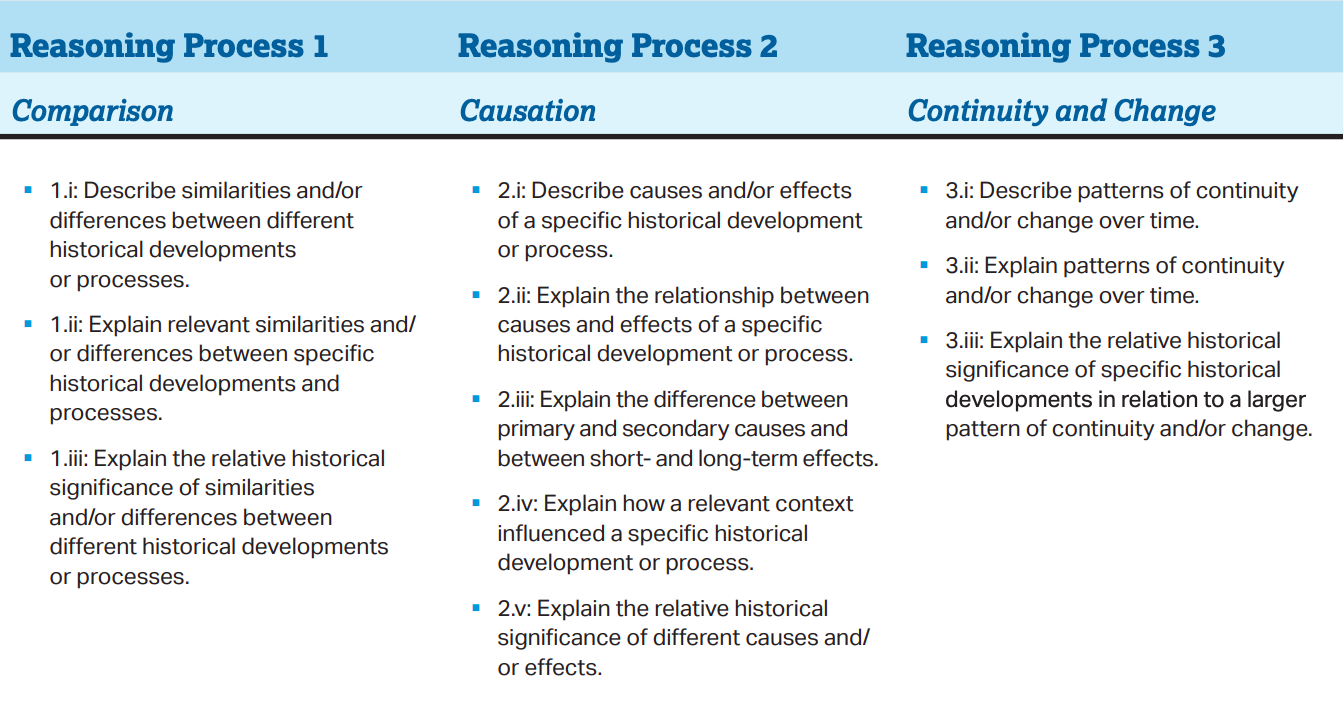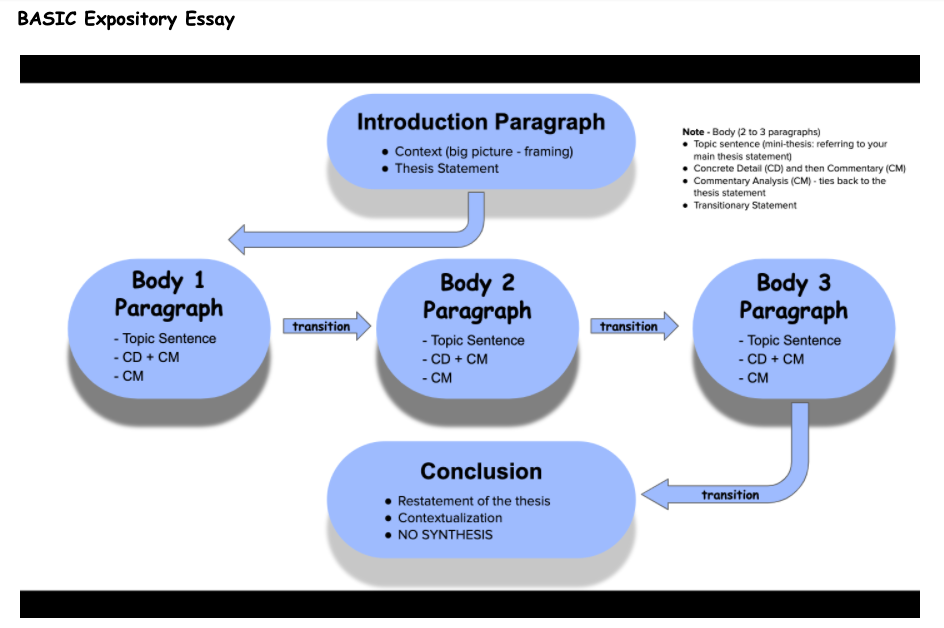How to think like an historian…

Reasoning processes describe the cognitive operations that students will be required to apply when engaging with the historical thinking skills on the AP Exam. The reasoning processes ultimately represent the way practitioners think in the discipline. Specific aspects of the cognitive process are defined under each reasoning process.

Comparison/Continuity/Causation Essays
Comparison (Point by Point) — A single characteristic of the first item is compared with a single characteristic of the second item. Transitional words or phrases are extremely important in this style, so that the paper does not appear “choppy.”
Introduction Thesis (AP, Time/Place, 3 Categories/Groups, 1:2 Ratio) + Context
Body (x3) TS
Item 1 = CD+ + CM
Item 2 = CD+ + CM
Direct Comparison between Items 1 and 2 AND Analysis of Sim/Diff
CS (if necessary)
Conclusion Restate the Thesis in New Terms + Synthesis
|
Continuity/Change Over Time
Continuity/Change Over Time essays are similar to Comparison essays since they both look at how something is similar or different than something else. In the CCOT essay, the similarity is how something did not change and the differences are the changes. The important element is why things did or did not change.
The most important elements of the Continuity/Change Over Time essay are that the student must show what has changed and what has remained continuous throughout those changes from the beginning to the end of the time period given. The continuities must be substantial, not obvious (Mexicans remained Mexicans), nor can change be continuous.
Introduction Thesis (AP, Time/Place, 3 Categories/Groups, 1:2 Ratio) + Context
Body (x3) TS
CD + CM
CD + CM
CD + CM
CS
Conclusion Restate the Thesis in New Terms+ Synthesis
|
Causation essays are similar to Continuity and Comparison essays. In the Causation essay, students must analyze cause and/or effects. If they are required to do both, they must address both in the thesis. The important element is what led up to the event and/or what happened because of the event.
Introduction Thesis (AP, Time/Place, 3 Categories/Groups, 1:2 Ratio) + Context
Body (x3) TS
CD + CM
CD + CM
CD + CM
CS
Conclusion Restate the Thesis in New Terms+ Synthesis
|
Related


You must be logged in to post a comment.